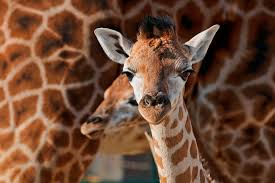Stamp: Giraffe (Giraffa camelopardalis) (Nyassa 1921)
Giraffe (Giraffa camelopardalis) (Nyassa 1921)
01 January (Nyassa ) within release Nyassa Company goes into circulation Stamp Giraffe (Giraffa camelopardalis) face value 1 Portuguese centavo
| Stamp Giraffe (Giraffa camelopardalis) in catalogues | |
|---|---|
| Stamp Number: | Sn: PT-NY 108 |
| Stanley Gibbons: | Sg: PT-NY 116 |
| Afinsa-Mundifil: | Afi: PT-NY 108a |
Stamp is square format.
Also in the issue Nyassa Company:
- Stamp - Flagship Sao Gabriel face value 7½;
- Stamp - Flagship Sao Gabriel face value 8;
- Stamp - Flagship Sao Gabriel face value 10;
- Stamp - Flagship Sao Gabriel face value 15;
- Stamp - Flagship Sao Gabriel face value 20;
- Stamp - Giraffe (Giraffa camelopardalis) face value 1;
- Stamp - Giraffe (Giraffa camelopardalis) face value 1½;
- Stamp - Plains Zebra (Equus quagga) face value 30;
- Stamp - Plains Zebra (Equus quagga) face value 40;
- Stamp - Plains Zebra (Equus quagga) face value 50;
- Stamp - Plains Zebra (Equus quagga) face value 1;
- Stamp - Vasco da Gama face value 2;
- Stamp - Vasco da Gama face value 2½;
- Stamp - Vasco da Gama face value 4;
- Stamp - Vasco da Gama face value 5;
- Stamp - Vasco da Gama face value 6;
Stamp Giraffe (Giraffa camelopardalis) it reflects the thematic directions:
Animals are multicellular, eukaryotic organisms of the kingdom Animalia (also called Metazoa). All animals are motile, meaning they can move spontaneously and independently, at some point in their lives. Their body plan eventually becomes fixed as they develop, although some undergo a process of metamorphosis later on in their lives. All animals are heterotrophs: they must ingest other organisms or their products for sustenance.
The giraffe is a large African hoofed mammal belonging to the genus Giraffa. It is the tallest living terrestrial animal and the largest ruminant on Earth. Traditionally, giraffes have been thought of as one species, Giraffa camelopardalis, with nine subspecies. Most recently, researchers proposed dividing them into up to eight extant species due to new research into their mitochondrial and nuclear DNA, and individual species can be distinguished by their fur coat patterns. Seven other extinct species of Giraffa are known from the fossil record
Mammals are any vertebrates within the class Mammalia (/məˈmeɪli.ə/ from Latin mamma "breast"), a clade of endothermic amniotes distinguished from reptiles (including birds) by the possession of a neocortex (a region of the brain), hair, three middle ear bones and mammary glands. All female mammals nurse their young with milk, secreted from the mammary glands. Mammals include the largest animals on the planet, the great whales. The basic body type is a terrestrial quadruped, but some mammals are adapted for life at sea, in the air, in trees, underground or on two legs. The largest group of mammals, the placentals, have a placenta, which enables the feeding of the fetus during gestation. Mammals range in size from the 30–40 mm (1.2–1.6 in) bumblebee bat to the 30-meter (98 ft) blue whale. With the exception of the five species of monotreme (egg-laying mammals), all modern mammals give birth to live young. Most mammals, including the six most species-rich orders, belong to the placental group. The largest orders are the rodents, bats and Soricomorpha (shrews and allies). The next three biggest orders, depending on the biological classification scheme used, are the Primates (apes and monkeys), the Cetartiodactyla (whales and even-toed ungulates), and the Carnivora (cats, dogs, seals, and allies).


